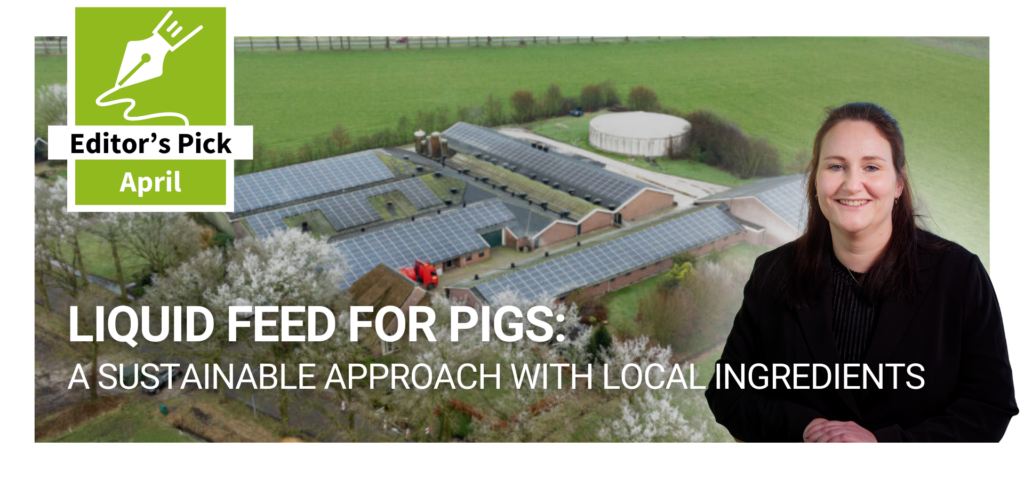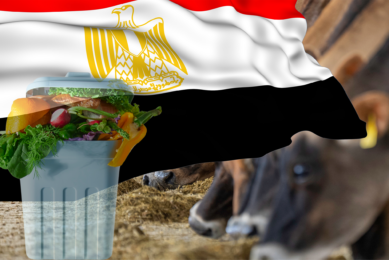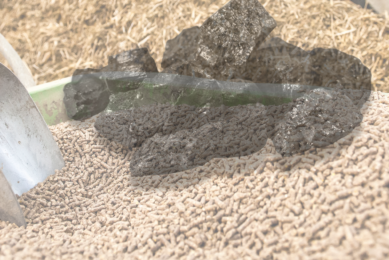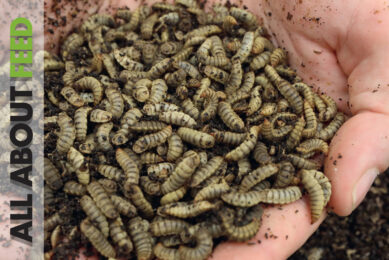UK Agriculture: How pulses can help reduce carbon footprint and boost sustainability
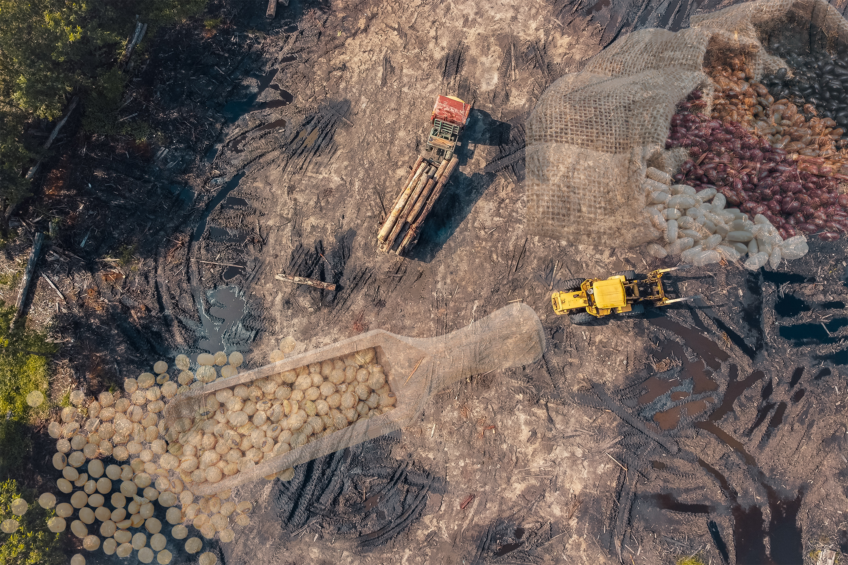
Ways to cut the UK’s agricultural carbon footprint by 7% through swapping imported soya with pulses have been unveiled.
Data released from a study by Farm Carbon Toolkit shows that 3.4Mt of CO2 equivalent could be saved through reducing the amount of imported soya bean meal fed to livestock.
Better use of home grown pulses
The figures suggest the potential to cut carbon emissions through better use of home-grown pulses is more than 2.5 times previous estimates.
The reduction can be achieved by increasing pulse production to 20% of the current total area and replacing 50% of the imported soya bean meal currently being fed to livestock, according to John McArthur, managing director of McArthur BDC.
Savings: 4 main factors
“That saving is driven by 4 main factors – fuel use, synthetic nitrogen fertiliser use, both directly and indirectly and swapping imported soya bean meal to UK pulses,” he said.
The analysis is part of a 4-year, £5.9m projected funded by Defra’s Farming Future R+D Fund which involves 17 partner organisations and aims to achieve a net carbon reduction of 1.5Mt.
Farmers need to be part of the climate change solution
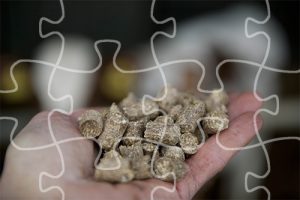
Change is needed – but not all piled on top of farmers
Philip Lymbery, Chief Executive Officer of Compassion in World Farming International, told the “From Soya to Sustainability” conference in Peterborough, East Midlands, that farmers needed to be part of the solution to climate change.
“There needs to be a change, but don’t pile it on farmers and farming to find a away out and to find it. We as a society need to get behind the farming community, to get behind the leaders that are bringing together the innovators, and make it happen. Enable them and bring public money forward.”
Relationship between soy & deforestation
Gemma Hoskins, UK Director of Mighty Earth, highlighted the link between imported soya and deforestation in Latin America. Figures quoted by traders claiming soya was deforestation free was not based on hard data. But EU deforestation legislation coming into force at the end of this year (30 Dec) would cover a range of commodities and covered both illegal and legal deforestation.
Solutions presented to partners in the NCS project included research by the Scottish Rural College (SRUC), the James Hutton Institute and Agrii and farmers involved in the project.
Lee Trulove, Head of Regenerative Farming at First Milk, said the cooperative was working to support the supply chain to find a route out of soya. “Is certified deforestation-free soya the end game? I suggest it isn’t. even if that soy is certified questions still exist about how it is grown.
“We also need to think about ghost acres. It’s all very well being efficient on the farm, but that can be undermined by how many acres somewhere else in the world are needed to supply feed for the cows.”
Trulove said the alternative was obvious: “We’re talking about UK-grown proteins including beans, and we definitely support that at First Milk.”
Feeding trials
Feeding trials by First Milk producers had been positive and would be repeated this winter, he added: “We’re going to expand it, but we do think the potential is there. As a dairy cooperative, we’re looking to help the supply chain because we do think there is a route out of soya.”
Faba beans
Jos Houdijk, from SRUC, said that faba beans were also viable as an alternative to soya for growing pigs and chickens, bur processing made them better.
“If we dehull faba beans we lift the digestibility and the concentrations of amino acids, and that gives us opportunity to increase soya replacement potential.”
Broilers
An NCS (Nitrogen Efficient plants for Climate Smart Cropping Systems, trial using the bean variety Lynx, combined with dehulling and toasting, found that broilers fed this variety up to 30% reached the same finished weights as those fed on soya, but with an improved feed conversion ratio.
Layers
“We produced these chickens with 68% less soya bean meal input and the carbon footprint saving were almost 40%,” he said.
Arable and poultry producer John Seed, who runs a 32,000-laying flock in the Scottish Borders, said he started looking to replace soya when the egg price was below the cost of production, but soon also saw the environmental cost. “82% of the carbon emissions from my farm came from purchased feed and the soya predominantly.”
He praised the NCS Project, in which he is involved as a Pulse Pioneer, paid to carry out on-farm trials. Trialling new approaches can be both expensive and ‘heartbreaking’ he said. “You need to have government sponsored research like this.”
John Seed (Pulse Pioneer) found that by feeding beans, even at 10% he reduced emissions by about 400t/year.
Farmers shouldn’t be taking sole responsibility, he concluded. “We are the front line, but we are dealing with the broken promises, the sudden loss of subsidy and trade deals favouring unsustainable imports.”
Benefits of legumes: Not just in lower greenhouse gases
Professor Pete Iannetta, of the James Hutton Institute, said including legumes in the arable rotation clearly has the potential to lower environmental footprints: “It’s not just greenhouse gases, there’s water quality improvements to be gained and a host of other benefits.”
Crop rotation
Citing NCS research on unique long-term crop rotation data from the ‘Centre for Sustainable Cropping’, which compares spring barley crops that had been preceded by either spring beans or spring barley, he said: “There was a 1.2t/ha yield uplift in the barley following beans, despite synthetic nitrogen fertiliser use reductions in-line with RB209 recommendations. The environmental impact reductions were apparent despite a winter fallow after the beans.
“That’s interesting because the bean nitrogen-rich residues left in-field after their harvest would have been all-but lost by the time the following spring barley crop was sown. We need more data on that, but I don’t believe the barley benefits are simply due to soil nitrogen levels. There are likely changes to the soil structure, and we know already that beans support a ‘symbiotic microbiome’ – changing the diversity of the microbes associated with plant roots to more-favourable types.”
Consistency of performance of field beans is “a bit of a nightmare” admitted Agrii agronomist Todd Jex. “A lot of the potential is lost in the very early stages. You cannot grow them tightly in rotation because of build-up of soil-borne pests and diseases and you need to consider all three aspects of soil health – physical, chemical and biological.”
4 considerations when putting the crop in the ground:
- drilling date, (Todd stressed the importance of early drilling)
- variety,
- establishment system and
- seed rate.
“As soon as wheat drilling is finished, we’ll put winter beans in, from the middle of October onwards.” Spring beans could be drilled in January, he added. “The earlier the better.”
More farmers needed to be Pulse Pioneers
Oxfordshire farmer and founder of the British On-Farm Innovation Network (BOFIN) Tom Allen-Stevens called for more farmers to sign up as Pulse Pioneers, who are paid to carry out the on-farm trials in the NCS Project.
“This year we have 20 taking part but next year we are ramping that up to 40. Supported by the scientists and other experts in our partner organisations the trials are a real opportunity to find ways to grow better, more consistent crops.”
Sharing that knowledge between Pulse Pioneers, the ‘Pulse PEP’ NCS community and the wider industry, was another large part of the project and BOFIN’s role within it, he explained.
Consistency
Achieving consistency is the main goal for NCS bean trials carried out by Rob Waterston, farm manager at Welford Park Estate. “The inconsistency drives me mad. I love them some years, but then others they are sparse, and I think, why do we bother?”
His Pulse Pioneer trial was a 3ha block of beans from which he took leaf samples to send away for analysis. “On the back of that we tailor made a nutritional programme. We did that twice in the build up towards flowering to make sure the plant gets everything it needs to maximise the flowering potential. It was quite an expansive list of micronutrients that went on.”
He achieved a 0.2t yield uplift in that area and a wealth of benchmark data from ADAS Bean YEN, into which his crop was entered, to analyse and interpret its performance.
Importance of knowledge exchange
Paul Barnes, Estate Manager at South Ormsby Estate said that as an organic producer beans were an important part of his 7-year rotation. As a Pulse Pioneer within NCS he runs trials on his farm. In year one he was looking at applications of 2 products that capture atmospheric N, comparing plant health above and below the ground with those of untreated crops. This revealed higher levels of nodulation, plant growth and vigour scoring in the treated crops compared with untreated. This year he will also be assessing the following spring milling wheat crop to confirm the impact the beans had made, as part of the NCS on-farm trials.
Barnes stressed how important knowledge exchange was and the value of the 20 Pulse
Pioneers involved in the NCS Project sharing what their learning had been from the on-farm trials.
“Let’s get more on board – bring it on,” he added.



